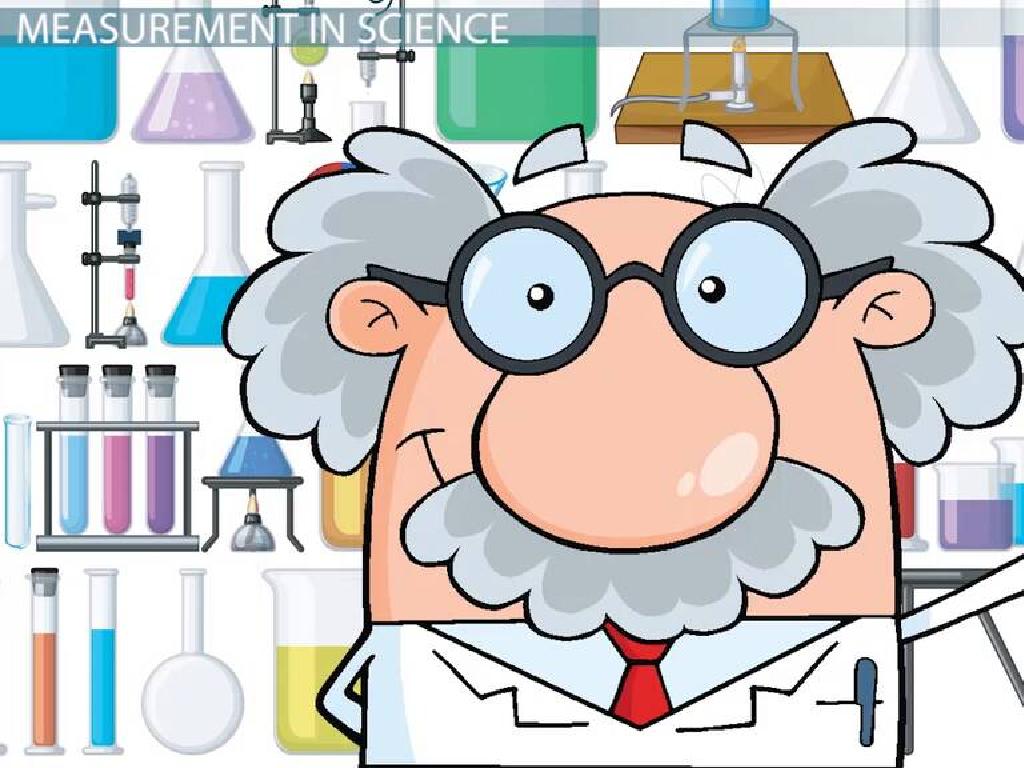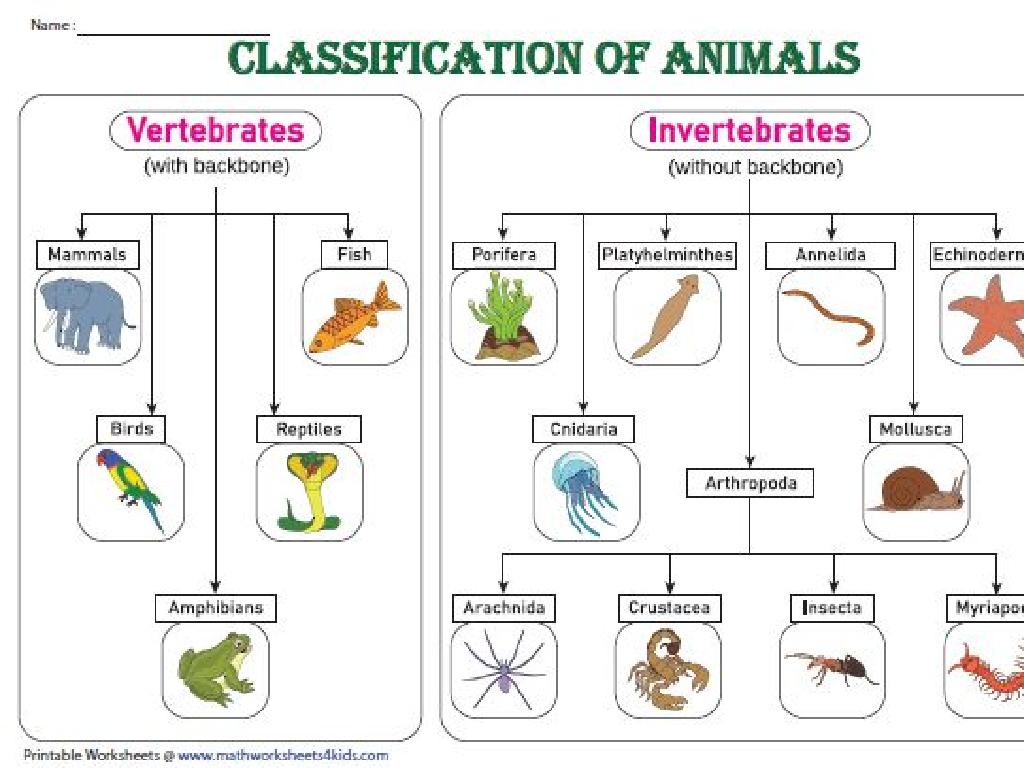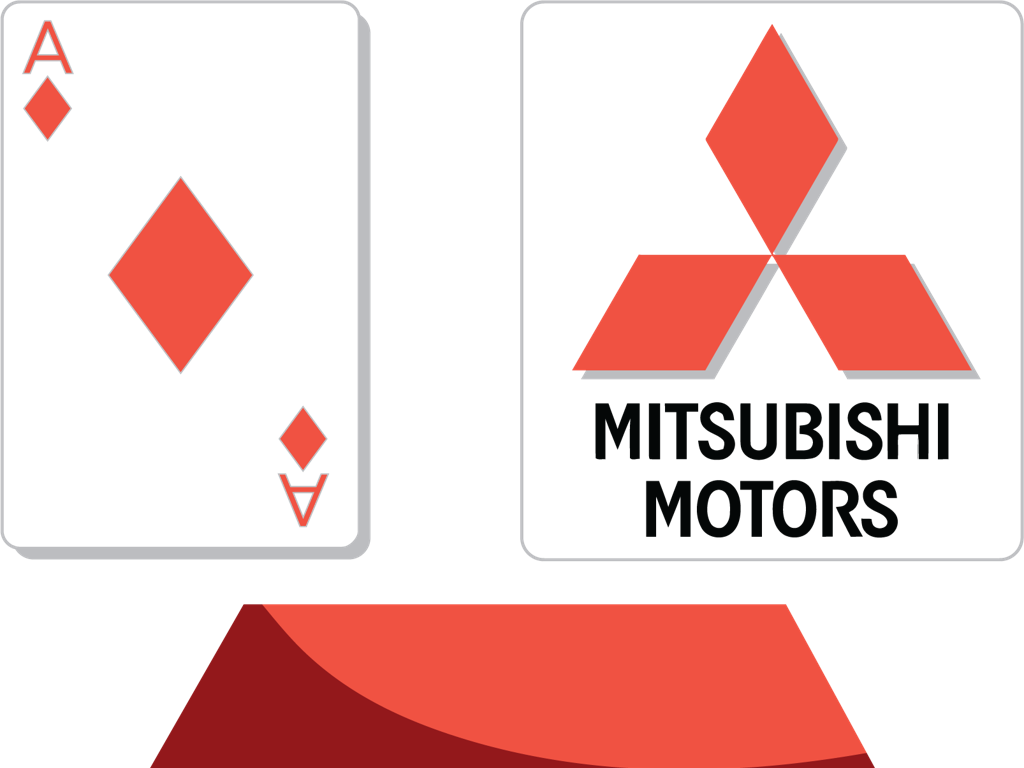Body Systems: Digestion
Subject: Science
Grade: Sixth grade
Topic: Anatomy And Physiology
Please LOG IN to download the presentation. Access is available to registered users only.
View More Content
Exploring the Digestive System
– Anatomy & Physiology intro
– Overview of body systems
– Digestive system functions
– Breaks down food into nutrients
– Journey of food processing
– From ingestion to nutrient absorption
|
This slide introduces the field of anatomy and physiology, setting the stage for a deeper dive into the human body’s complex systems. Begin with a brief explanation of anatomy (the study of the body’s structure) and physiology (the study of how the body functions). Provide an overview of the various body systems to give students a sense of the body’s interconnectedness. Then, focus on the digestive system, explaining its critical role in breaking down food into nutrients that the body can use for energy, growth, and repair. Illustrate the journey of food, starting from ingestion, moving through mechanical and chemical digestion, to the absorption of nutrients, and finally the elimination of waste. Encourage students to think about the last meal they ate and imagine the process it goes through in their bodies.
Exploring Digestion in the Human Body
– Digestion: The breakdown process
– Digestion is how our body breaks down food into nutrients.
– Food’s journey: Mouth to stomach
– Food is chewed, mixed with saliva, and swallowed to reach the stomach.
– Digestion’s role in absorbing nutrients
– Nutrients from food are absorbed into the body during digestion.
– Importance for overall health
|
This slide introduces the concept of digestion, a critical process in the human body that breaks down food into nutrients that can be absorbed and used for energy, growth, and cell repair. Start by defining digestion and then describe the journey of food, beginning in the mouth where it’s chewed and mixed with saliva, which contains enzymes that start breaking down the food. It’s then swallowed and travels down the esophagus to the stomach. Emphasize the importance of digestion in nutrient absorption, where the digestive system extracts vitamins, minerals, proteins, fats, and carbohydrates from the food we eat, which are essential for our health and well-being. Encourage students to think about the different types of foods they eat and how their body works to use those foods to keep them healthy.
Exploring the Digestive System
– Mouth: Starts digestion
– Teeth chew food, saliva begins chemical digestion
– Esophagus: Transports food
– A muscular tube that moves food to the stomach
– Stomach: Breaks down food
– Acids and enzymes mix with food to form chyme
– Small Intestine: Absorbs nutrients
– Villi increase surface area to absorb digested nutrients
– Large Intestine: Absorbs water, forms waste
– Remaining water is absorbed and feces are formed
|
This slide provides an overview of the major organs in the digestive system and their primary functions. Starting with the mouth, where mechanical digestion begins with chewing and chemical digestion starts with saliva, the process continues through the esophagus, which serves as a conduit to the stomach. The stomach acts as a mixer and chemical reactor, breaking down food into a semi-liquid form called chyme. The small intestine is where most nutrient absorption occurs, thanks to its highly folded surface lined with villi. Finally, the large intestine absorbs the remaining water from the indigestible food matter, and waste is formed for excretion. Encourage students to think about the journey of food and how each organ contributes to the process of digestion.
Digestive Enzymes: Nature’s Catalysts
– What are enzymes?
– Enzymes are proteins that speed up chemical reactions in the body.
– Types of digestive enzymes
– Amylase, protease, and lipase are key digestive enzymes.
– Enzymes’ role in digestion
– They break down food into nutrients the body can absorb.
– Examples of enzyme action
– Amylase in saliva starts breaking down starches while chewing.
|
This slide introduces students to the concept of enzymes as biological catalysts, focusing on their role in the digestive system. Begin by explaining that enzymes are proteins that help speed up chemical reactions, making the process of digestion more efficient. Highlight the main types of digestive enzymes: amylase, which breaks down carbohydrates; protease, which breaks down proteins; and lipase, which breaks down fats. Discuss how these enzymes work together to break down food into smaller, absorbable nutrients. Use the example of amylase in saliva to show how the digestion process starts in the mouth. Encourage students to think of other examples where enzymes work in their bodies. This will help them understand the importance of enzymes in their daily lives.
The Digestive Process: From Start to Finish
– Journey of food in digestion
– Food travels through the mouth, stomach, intestines, and out
– Chemical vs. Mechanical Digestion
– Chemical digestion uses enzymes, mechanical involves physical breakdown
– Body’s use of nutrients
– Nutrients fuel our body, help growth, and repair tissues
– Importance of a healthy diet
|
This slide provides an overview of the digestive process, highlighting the path that food takes through the digestive system, the differences between chemical and mechanical digestion, and how the body utilizes the nutrients extracted from food. Emphasize the importance of each step in the process and how both types of digestion are crucial for breaking down food into a form that the body can use. Discuss the role of nutrients in maintaining health, supporting growth, and repairing the body. Lastly, touch on how a balanced diet contributes to an efficient digestive system and overall well-being. Encourage students to think about what they eat and how it affects their bodies.
Promoting a Healthy Digestive System
– Foods beneficial for digestion
– Yogurt, fruits, vegetables, and whole grains support gut health.
– Fiber and hydration significance
– Fiber aids digestion; water helps the digestive tract.
– Habits for digestive wellness
– Regular meals, chewing well, and exercise promote a healthy system.
|
This slide aims to educate students on how to maintain a healthy digestive system through proper nutrition and lifestyle choices. Emphasize the role of fiber-rich foods like fruits and vegetables in aiding digestion and preventing issues like constipation. Discuss the importance of staying hydrated for a smooth digestive process. Encourage students to adopt habits such as eating regular meals, chewing food thoroughly, and staying active to support their digestive health. Provide examples of fiber-rich foods and suggest ways to include more water in their daily routine. This will help students understand the practical steps they can take to support their digestive system.
Common Digestive Problems
– Identifying digestive issues
– Recognizing when our digestive system isn’t working properly
– Causes and symptoms
– Common issues include heartburn, constipation, and diarrhea caused by various factors like diet or stress
– When to seek medical advice
– Understanding when symptoms are serious enough to require a doctor’s visit
– Discussion and questions
|
This slide aims to educate students on how to identify common digestive problems and understand their causes and symptoms. Discuss the importance of recognizing when the digestive system is not functioning correctly and the common signs to look out for, such as discomfort, bloating, or irregular bowel movements. Explain that while some issues like occasional heartburn or constipation can be due to diet or temporary stress, persistent or severe symptoms may indicate a more serious condition that requires medical attention. Encourage students to ask questions and discuss any experiences they are comfortable sharing, emphasizing the importance of consulting with a trusted adult or healthcare provider when necessary.
Class Activity: Build a Digestive System Model
– Create a digestive system model
– Gather clay, colored paper, scissors, glue
– Work in groups to assemble the model
– Collaborate to represent each organ
– Present your model to the class
– Explain the function of each part in your presentation
|
This hands-on activity is designed to help students understand the anatomy of the digestive system by creating a physical model. Divide the class into small groups and provide each group with clay, colored paper, scissors, and glue. Each group will use these materials to build a model of the digestive system, including the mouth, esophagus, stomach, intestines, and other key components. Encourage creativity and accurate representation of each organ’s shape and position. Once the models are complete, each group will present their model to the class, explaining the function of each part of the digestive system. This will reinforce their understanding and help them remember the information. As a teacher, circulate to provide guidance and ensure that each group is on track. Possible variations of the activity could include using different materials, labeling the parts, or even creating a life-size model.
Digestive System: Conclusion & Q&A
– Recap the digestive journey
– From mouth to stomach to intestines, nutrients are absorbed and waste is expelled.
– Digestion’s role in health
– Proper digestion is crucial for nutrient absorption and energy.
– Questions about digestion?
– Discuss what we’ve learned
– Share thoughts or confusions about the digestive process.
|
This slide wraps up the lesson on the digestive system by summarizing the path food takes through the body and emphasizing the importance of digestion for overall health. Encourage students to think about how each part of the digestive system contributes to breaking down food and extracting nutrients. Highlight the connection between good digestive health and the body’s ability to function properly. Open the floor for questions, fostering a discussion that allows students to clarify any doubts and solidify their understanding of the digestive system. Be prepared with guiding questions in case students are hesitant to participate.




